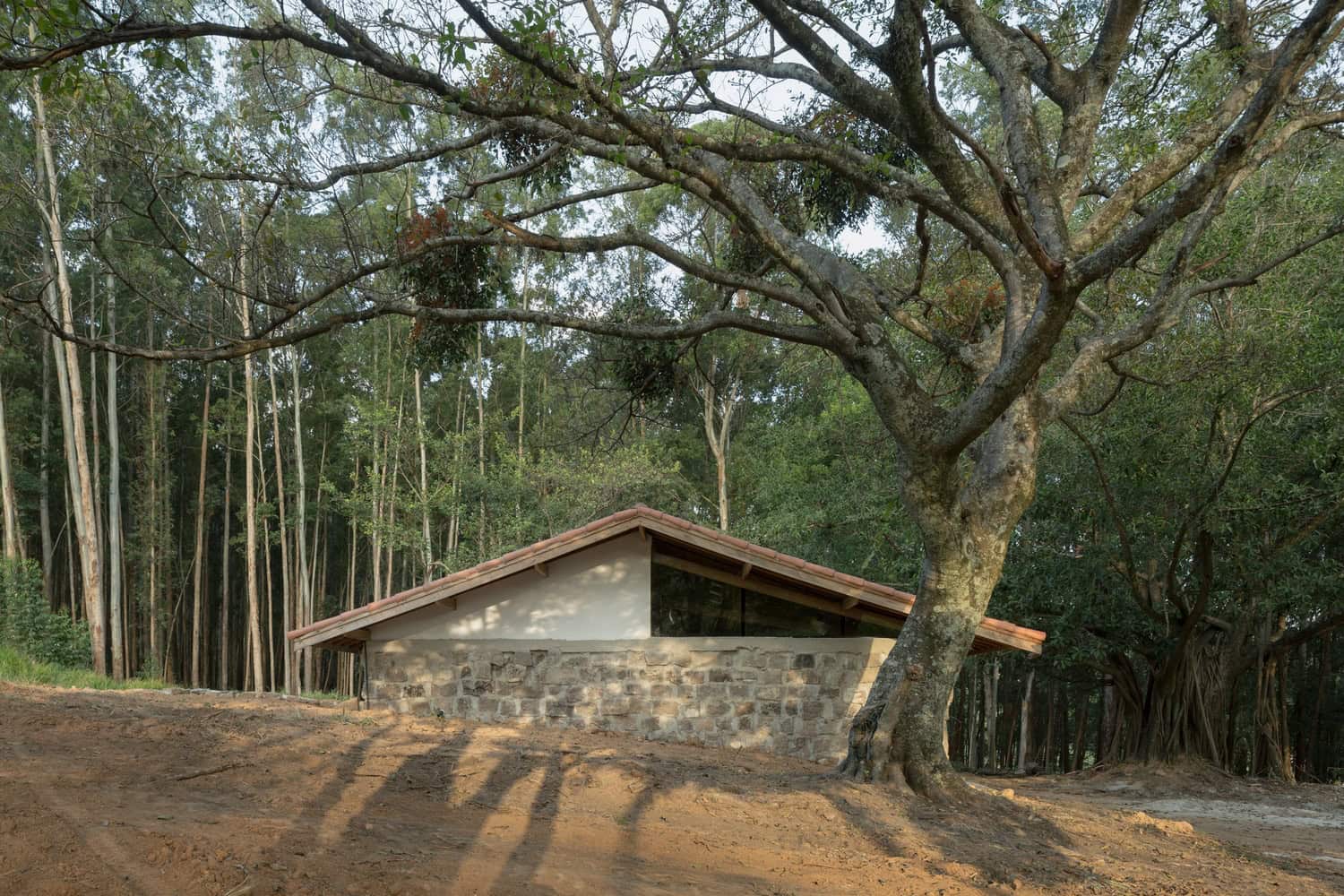Project: House in Ruins
Architects: messina | rivas
Location: Itupeva, Brazil
Area: 2,271 sf
Year: 2022
Photographs by: Federico Cairoli, messina | rivas
House in Ruins, by messina | rivas, redefines the concept of inhabiting by transforming a colonial stone ruin on a 19th-century farm in Itupeva, Brazil, into two residences. The design ingeniously collaborates with the existing environment, integrating the ruin’s natural overgrowth into the architecture. A central courtyard, inspired by an ancient rubber tree’s roots, anchors the homes. The original stone walls demarcate the boundary between outside and inside. Crafting a protective roof from the existing structure, a stone wall’s horizontality supports a wooden roof made of locally sourced eucalyptus. The dialogue between the weight of stone and the lightness of wood is accentuated by the roofs’ openings that mimic clouds over mountains, creating a unique blend of old and new.


The ruined house is located on the outskirts of the city of Itupeva, 80km from São Paulo, on a 19th-century farm. We were asked to renovate a colonial stone ruin and transform it into two residences for local residents.
But how to inhabit a ruin? Previously, we would have said that it is an abandoned construction, but from the moment we consider that it is taken over by other habitabilities, such as plants, we asked ourselves if we could not build starting from them, that is, with a project action that makes an architecture resurface with the ruin.
The presence of a false century-old rubber tree with its aerial roots located just in front of the construction, guided the construction of a central void, which functions as a courtyard between two autonomous houses. The divisions between the exterior and interior are clearly marked by the strong stone presence of the existing ruin walls.
To make the ruin a shelter, the action was to create the necessary conditions for a roof, taking advantage of the existing structure. Thus, we defined a stone wall level that marked horizontality and, from it, we built a tie beam. In this way, we consolidated the walls by making them a large foundation on which to rest a wooden roof with eucalyptus taken from the surrounding trees.
This duality between the weight of the stone and the lightness of the wood is also reinforced by the contrast between the opaque walls that divide and the roofs with openings that bring them closer. In other words, like a cloud over a mountain.
This website uses cookies.